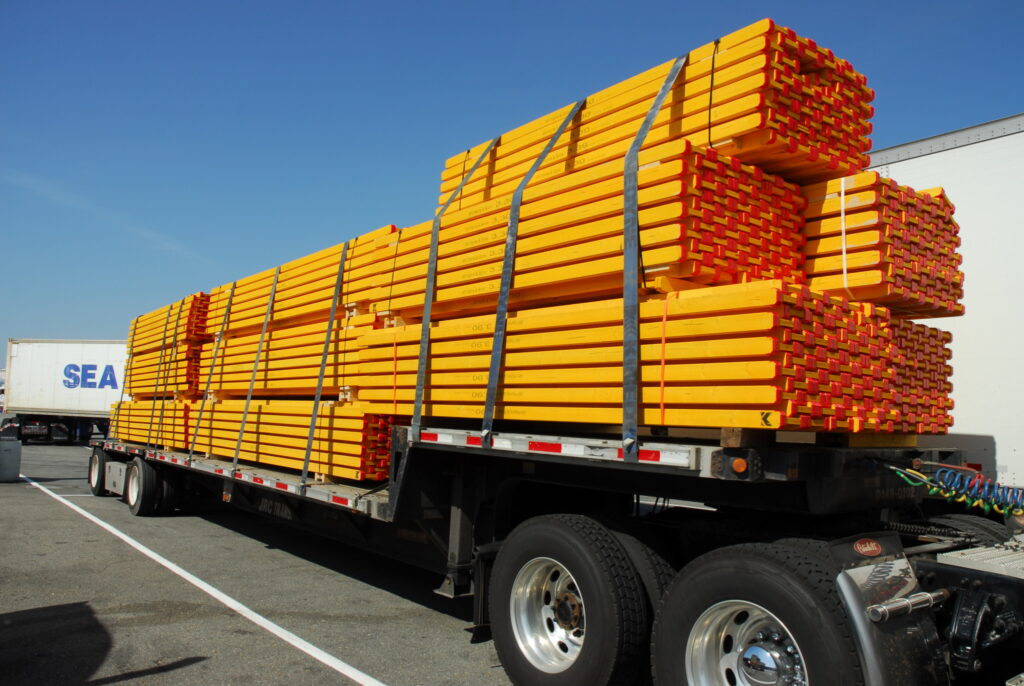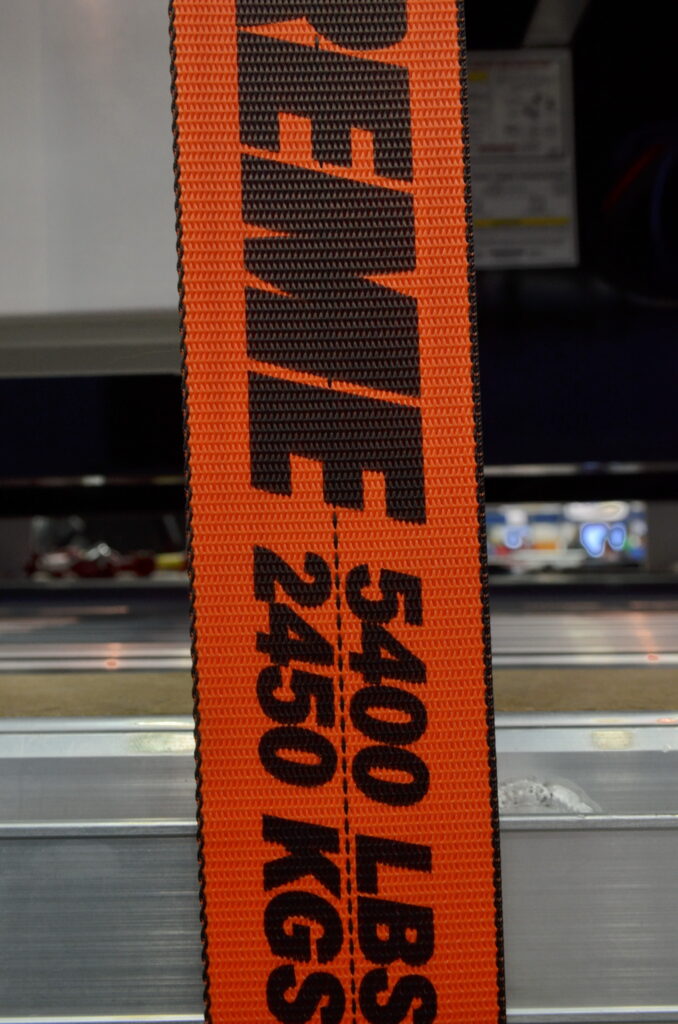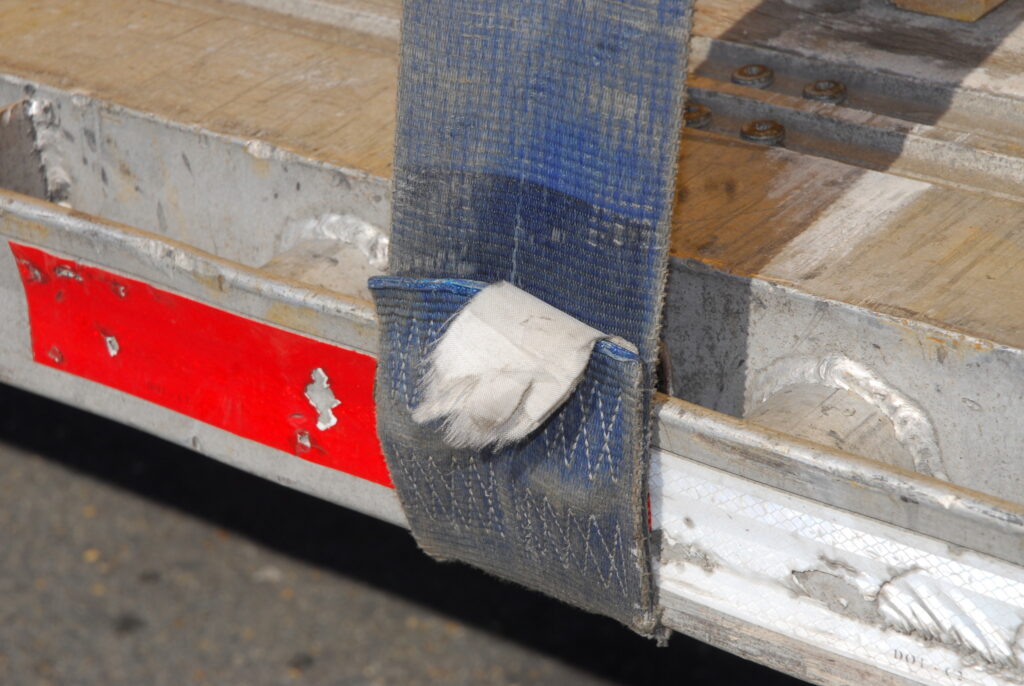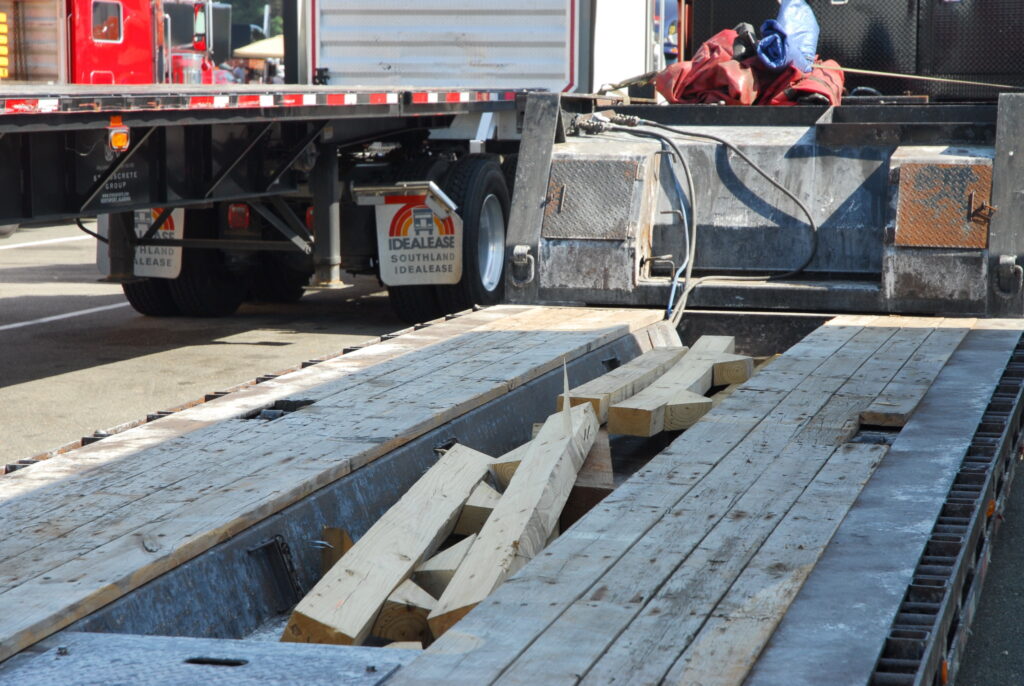Beware the pitfalls of cargo securement rules: Driver’s Education
Cargo securement is a snake pit. As regulations go, few others are as open to misunderstanding or misinterpretation. While plenty of tiny paragraphs spell out how many chains or straps are required for given bits of cargo, drivers often fail to observe some of the rules’ intricacies. And sometimes inspectors have their own interpretations of what the rules mean.

Adding to the complexity of compliance are “local interpretations” and even core differences between the U.S. and Canadian regulations. Those differences are not supposed to exist.
Years ago, regulators in the U.S. and Canada agreed that a single regulatory framework for cargo securement would be in everyone’s best interest. They developed what came to be known as the “model regulation” upon which the actual regulations in both countries were to be based. It was really a set of guidelines, and since each country has its own way of writing and applying regulations, and partly due to political sensitivities, the cargo securement regulations in each country differ slightly.
Over the years, the rules have grown further apart.
Ironically, The Commercial Vehicle Safety Alliance (CVSA) holds two meetings every year — one in the U.S., the other in Canada — called the North American Cargo Securement Harmonization Public Forum. The intent of the forum is to address issues that crop up with enforcement. Anyone can bring an issue to the table, government officials, enforcement or industry.
When an issue is deemed valid, the model regulation is updated. But since it is just a reference document it’s up to the regulators in both countries to update their regulations. If they don’t, truckers wind up with two different sets of rules.
“When they wrote the model regulation, it was supposed to be the same in both countries,” says Kerri Wirachowsky, CVSA’s director of roadside inspection programs. “If the two countries do not update the regulations to reflect the changes in the model regulation, the more divergent the regulations in the two countries become. And there’s no reciprocity with cargo securement regs. You have to be compliant with the rules of the country in which you’re operating.”
CVSA maintains a searchable database of issues that have emerged over the years — and their resolutions.

Cargo securement traps
While disparate regulations cause their share of headaches, drivers are more likely to wind up with a ticket and perhaps out-of-service violation because of common errors and oversights. These are all issues covered by the cargo securement regulations, though some may not be completely obvious.
Unmarked Tiedowns
Canada requires all tiedown devices and assemblies to be marked with a working load limit (WLL) . For synthetic-web straps, this rating can be stenciled or labeled. Chains, hooks and load binders must have the rating embossed on the product.
With straps, sewn-on labels can fray or detach, leaving the strap with no visible indication of its WLL. With chains and hooks, the embossed indicator can wear off. If the WLL indicators cannot be seen by an inspector, it will be considered an illegal strap and zero-rated.
Here’s where it really hurts. If a piece of cargo requires four straps, and you have four brand-new, right-out-of-the-box straps with a brightly stenciled WLL on the strap, you’re golden. Then, thinking since you have a few extra straps in your toolbox, why not throw on an extra one just to be safe? You use an older strap in good condition, but with a frayed label that no longer shows its WLL.
“You’ll get a ticket for that bad strap, and you’ll be placed out-of-service,” says Dan Boyer of Winnipeg-based BDR Safety Consulting. “You’ll be charged for using an unmarked strap even though you meet the WLL requirements with the four new straps. The legislation says you cannot use any strap that does not have a working load limit indicated on it somewhere. If you take off the offending strap, you’ll be good to go, but you’ll still have the ticket and the OOS violation.”
If you happen to have a tarp covering the straps or chains that obscures the WLL indicator, you may have to pull back the tarp so the inspector can see the rating.
In the U.S., tiedown are not required to be marked. Any unmarked tiedown will be granted a default WLL based on the width of the strap or the type of chain. For example, synthetic web straps are granted a WLL of 1,000 lb. per inch of width (provided they are not damaged in a way that would reduce the rating). A 4-inch strap would have a default WLL of 4,000 lb., compared to a labeled 4-inch strap that could have a rating of 5,400 lb.
Chain is given a rating according to a table in the regulations. For example, an unmarked 5/16-inch chain has a default WLL of 2,650 lb. — compared to a Grade 70 Transport chain whose WLL is 4,700 lb.
Canada did away with the default working load limit for tiedown devices with the 2010 revision of National Safety Code Standard 10.
You can use more than the minimum number of tiedowns, just make sure they all meet the requirements and the WLL is clearly visible.

Load securement checks
Another common oversight is not logging required load inspections, Boyer says. Securement devices must be inspected for tightness and load conditions no more than 80 km from where the cargo is loaded, and then reinspected at every change of the driver’s duty status, or if the vehicle has been driven more than three hours, or more than 240 km.
“You have to leave the driver’s seat to inspect the load, and that requires a change of duty status to be recorded on the driver’s log,” he says. “Drivers are getting into trouble for not indicating the change in duty status. Different jurisdictions treat this one differently, but the bottom line is you must indicate where and when these load securement inspections take place to remain compliant with the cargo securement rules. At the very least, you should flag the stop on the log and indicate it was a load securement check, even if you’re taking a 15- or 30-minute break.”
Boyer says lots of drivers miss the three-hour/240-km check because they aren’t naturally inclined to stop. “They’ll go four hours or more until they are ready to take a break. Alberta and British Columbia seem to be particularly picky about this,” he says.
Minimum number of tiedowns
This gets back to the basics of load securement, where drivers should be expected to know how to calculate the minimum number and placement of tiedowns required for particular pieces of cargo. There are, however, a number of instances where drivers take shortcuts or fail to take into account some of the nuances . There are some cargo-specific rules that might be at odds with the basics, so be careful not to confuse the two.
Take, for example, a piece of cargo 10 feet long and weighing 2,000 pounds. If this article of cargo was blocked against forward movement by a headboard or another piece of cargo, it would require only one tiedown. If it was sitting alone on the deck and not contacting any other cargo, it would require two tiedowns.
Now, if the cargo was 10-feet, 1-inch long and not blocked against forward movement, it would require three tiedowns. If blocked, it would require two tiedowns.
The rules require two tiedowns for every 10 feet of unblocked cargo, and an additional tiedown for each additional 10 feet in length — even if it’s only slightly longer than 10 feet.
If two such pieces of cargo were loaded lengthwise on the trailer, the rearmost piece should contact the front piece so it can be considered blocked. If there’s a gap between the two pieces, the rearmost piece would be considered unblocked and would need three tiedowns (two for the first 10 feet of unblocked cargo, and a third for the length in excess of 10 feet).
If you’re unsure about these requirements or new to flatbedding, take some time to read up on the requirements or ask the boss about it.

Is that dunnage or cargo?
This one is another situation where Canada and the U.S. have different opinions and rules. The U.S. recognizes dunnage and bits of auxiliary equipment such as spare mud flaps, ladders, jugs of oil or windshield washer fluid, as not being cargo. The U.S. rules require simply that they be “secured”. But the rules do not require them to be secured in a certain way or with rated tiedown equipment.
Consequently, U.S. inspectors will accept tarp straps and un-rated, dollar-store-type ratchet straps for securing items like oil jugs, shovels, and spare mudflaps.
Canadian rules are different–very different. National Safety Code Standard 10 defines cargo as everything not physically part of the truck or bolted to it. Some jurisdictions seem to take this more seriously than others.
According to Kris Fulgham, a transportation compliance consultant with Alberta-based CayCan Safety Consulting, an unsecured windshield washer jug wedged between the fuel tank and the frame rail could net you a fine of $867 in his province.
“If a driver is hauling a piece of equipment on a flatdeck, they’ll worry about securing that properly, but sometimes they overlook the ancillary stuff like oil jugs, spare tires and the like,” he says. “The same goes for loose stuff in the cab.”
Fulgham say inspectors treat loose items like coolers, microwave ovens, even water bottles that are not stowed or secured properly as cargo securement violations.
“When you have a loose water bottle rolling around on the floor it could get jammed under the brake pedal, or a large loose item like a cooler on the passenger seat could become a projectile in a crash.”
Another item that you might not think comes under the cargo securement regs is gravel and debris on the deck or frame of the truck or trailer or the cargo. Obviously you can’t secure that sort of thing, so your only option is to get it off the trailer because if it’s on the truck and not tied down, it’s considered unsecured cargo.
Drivers wanting to use a lighter-duty cargo strap to secure items like dunnage boards, spare tires, and rolled tarps should look for straps with a stenciled or labeled working load limit. Beware — some of the packaging might reference a “breaking strength”, but that not the same as the WLL. The breaking strength is usually three to four times higher than the WLL. In any case, if a WLL figure does not appear on the strap (not just the packaging), it’s useless for securing dunnage in Canada because inspectors won’t recognize it even though it’s probably perfectly adequate for the job.
Have your say
This is a moderated forum. Comments will no longer be published unless they are accompanied by a first and last name and a verifiable email address. (Today's Trucking will not publish or share the email address.) Profane language and content deemed to be libelous, racist, or threatening in nature will not be published under any circumstances.
Thank you.
Hey Jim! Good to see you’re still at it, and providing great information. Troy here from Grimshaw AB. You came up for the Black Gold Truck Rodeo my pop was involved with and interviewed me and my buddy Sok for the “Mud In The Blood” piece you wrote back in the 90’s. That article spawned the Discovery Channel show “License To Drill”. We’re still at it up here, dad is still hanging around the shop but has pretty much hung up the driving gloves.
Your article is spot on, enforcement varies wildly in my home province of Alberta. Some officers are all about the cargo securement, especially regarding visible WLL labels and others seem to be more focused on paperwork. Another issue I’ve had with officers is the criteria for defective glass, finding a true and accurate description of acceptable windshield condition is tough to find and interpretation seems to vary quite a bit depending on who’s inspecting. Perhaps a topic you might be able to shed some light on for all us road warriors.
Take care my friend.